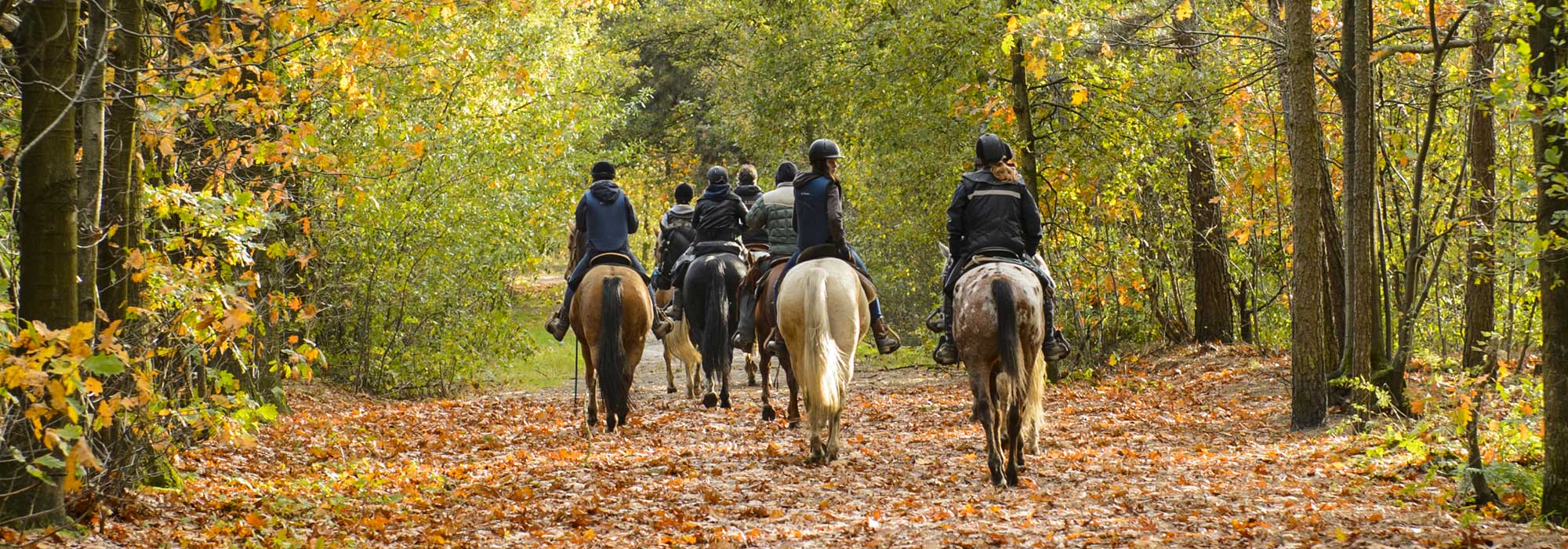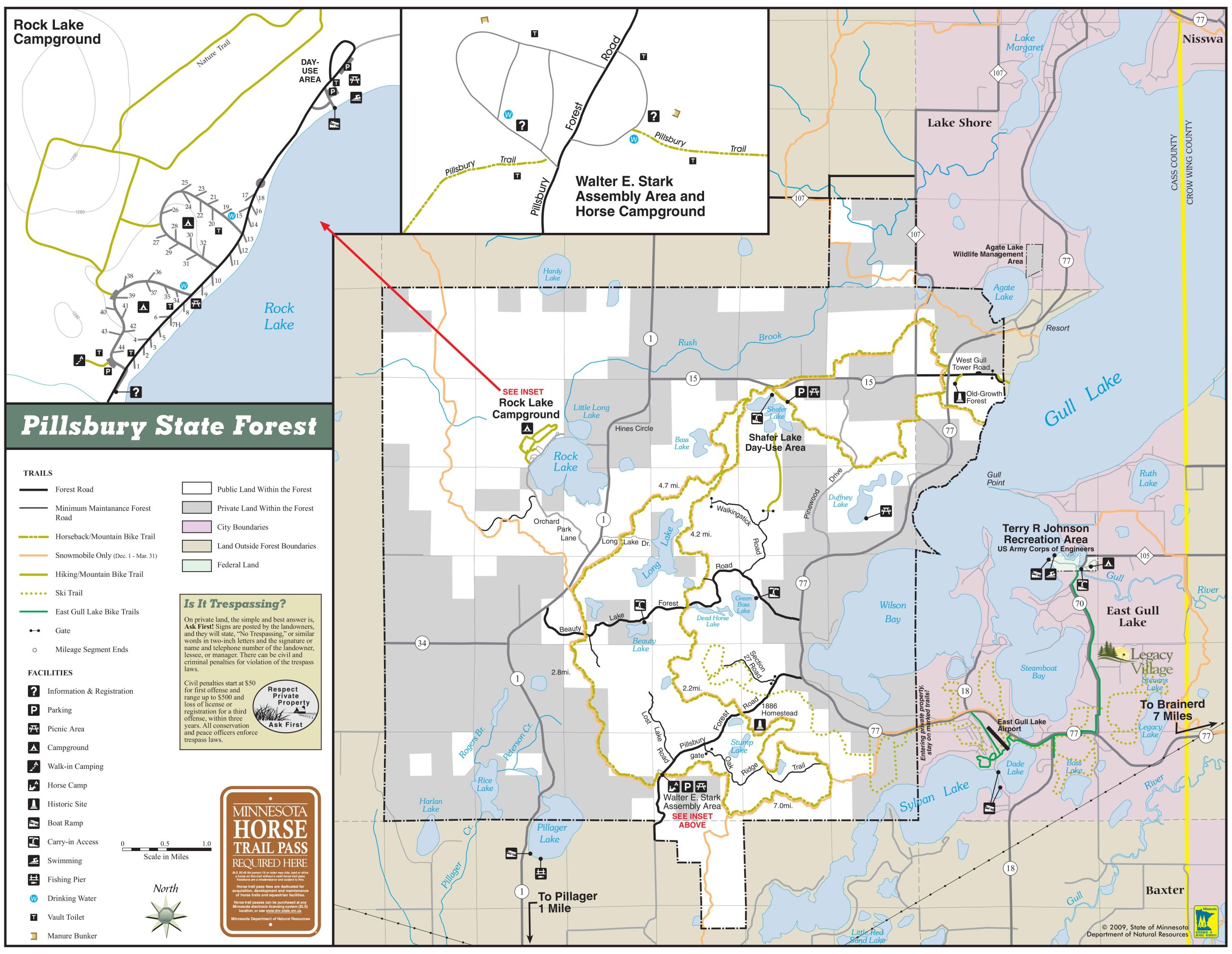
Pillsbury State Forest
Pillsbury State Forest is located in Cass County with access just over 4 miles north on County Road 77 from Cragun's Legacy Communities. The forest borders Gull Lake on the south and the city of Lake Shore to the north. It is managed by the Minnesota Department of Natural Resources.
The trails through the Pillsbury State Forest meander through a heavily forested area of a variety of deciduous and coniferous trees. The woods are dotted with small lakes and ponds where you are likely to see evidence of beavers and other wildlife. The trail system is especially popular with equestrians and mountain bikers during the summer and cross-country skiers and snowmobilers in the winter. Pillsbury State Forest includes 1.2 miles of hiking trails, 27 miles of horseback trails and 3 miles of cross-country skiing trails. Recreational facilities in the forest include the Walter E. Stark Horse Assembly Area, Shafer Lake, Green Bass Lake and Rock Lake Campground.
Pillsbury Forest was Minnesota’s first state forest. It was created in 1900 and came into official status in 1935. John Pillsbury, of flour milling fame, donated 990 acres of pineland in Cass County. This “forest reserve” became the nucleus upon which the Pillsbury State Forest was built.
By the spring of 1904, the first seeds had been planted in Minnesota's first state forest nursery. This nursery, no longer in operation, can still be seen in the northern reaches of the Pillsbury.
The summer of 1910 brought serious drought and devastating forest fires to much of Minnesota. In 1911, in response to the dangerous conditions, the Minnesota Forest Service was formed to suppress and prevent forest fires. One of the strategies was to build fire lookout towers. The first tower in northwest Minnesota was the Martin Hope tower, a wooden structure built just north and west of the Pillsbury nursery. Lars Hope worked at the nursery and owned land just across Rush Brook from the nursery. Hisson Martin designed the tower. Lars donated the land and Martin constructed the tower for $36.30. It was later replaced by a steel tower, and in 1937 was again replaced with a steel stair tower adjacent to Gull Lake.
Since 1900, the forest has grown in both size and structure. In a 1971 Brainerd Daily Dispatch article, the land base was listed as nearly 7,900 acres. Today the Pillsbury State Forest encompasses 25,612 acres of state, Cass County and private holdings. Timber includes red oak, aspen, birch, red, white, and jack pine. More than 1 million tree seedlings have been planted in the Pillsbury. By 1971 it had produced enough timber to build more than 3,000 homes.
A dominant force that shaped the Pillsbury Forest was Walter E. Stark. Walter's introduction to the Pillsbury forest came in 1952, when he was assigned to the Pillager Ranger Station. The forest's condition on his arrival did not meet with his high expectations. Enacting positive change was slow going as Walter struggled to assert himself as the Ranger, rather than simply as a ranger. Walter pinpointed two needs in the Pillsbury: first, to protect the forest from fire, and secondly to provide opportunity for the wise, recreational use of the forest. The first need required a straightforward approach, while the second proved a bit more complex.
Walter's vision for the Pillsbury was to provide a variety of recreational opportunities. Money for such projects was often difficult and sometimes impossible to find during the 1950s through 1970s, but that didn't matter to Walt. He had a dump truck and dozer and developed the practice of neighboring rangers "trading time" with each other on projects. Walter had the ideas, the equipment and the labor; Pillsbury had the potential. It was the perfect combination.
One of the first projects was the establishment of Rock Lake Campground and Day-Use Area. He carved what is now a campground with 48 camping sites, a swimming beach, boat access and a picnic area on the west side of Rock Lake. There were no lengthy environmental reviews, project proposals to scrutinize, or permissions to seek. Walter saw the need and the potential and simply went out and did the work.
In the early 1960s, horse riding enthusiasts Les and Ray Sellnow, met with Walt to see if a horse riding trail could be developed in the Pillsbury. Walt felt that the Pillsbury would be an ideal place to attract more visitors to a gem of a forest. With the Sellnow brothers' expertise, Walt and the Sellnows located, cleared, aligned, and widened trails as needed to take advantage of the best riding opportunities. Over time, Walt developed an assembly area, horse camp and the Schaffer Lake rest area. In the winter, Walt groomed the horse trails for snowmobile use.
Today, the Pillsbury State Forest has 27 miles of horse riding trails. As of 2011, the original Sellnow brothers and their friends have attained 50 consecutive years of horse camping in the Pillsbury. The first horse endurance race in the Midwest was established on the Pillsbury horse trail.
In 1982, both the Pillsbury and Walter were honored at the dedication of the Walter E. Stark Assembly Area. Officiating the event were fellow horseback riding enthusiasts and Minnesota governor Al Quie. The event celebrated Pillsbury's recreational opportunities and the culmination of one man's vision. For anyone who has spent an evening around a campfire at the horse camping site, without a doubt has heard stories of Walt Stark, and how, with the determination of a glacier, he completed the work in the Pillsbury that the ice sheets began thousands of years ago.


